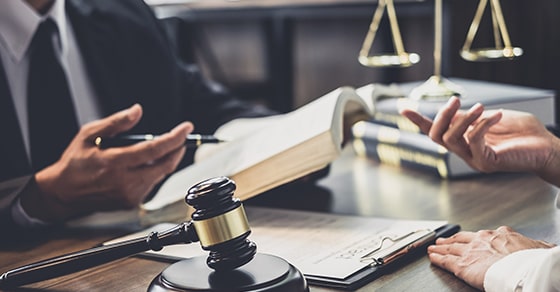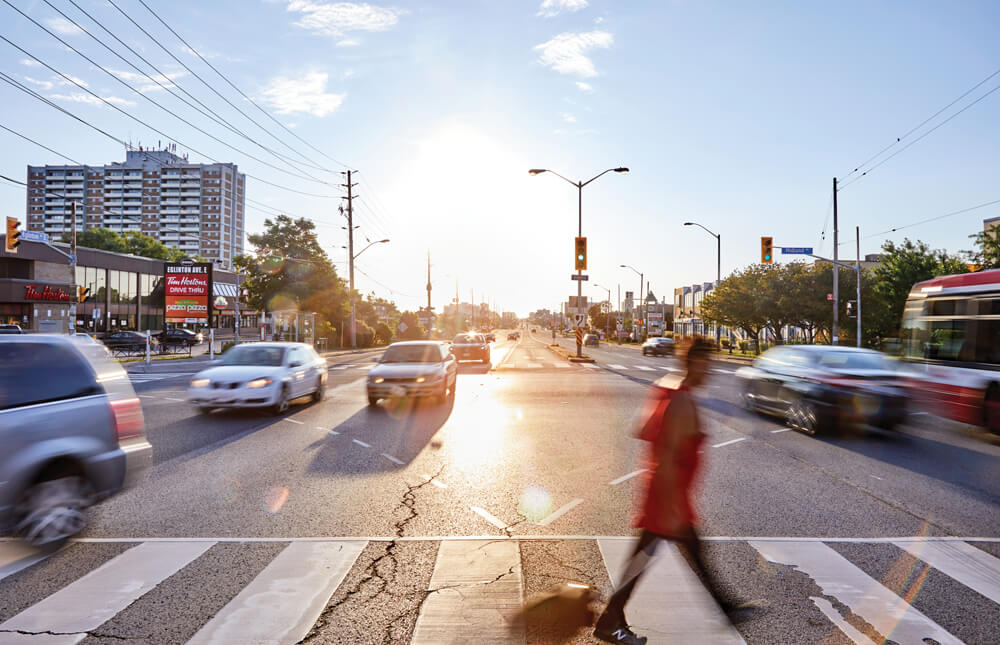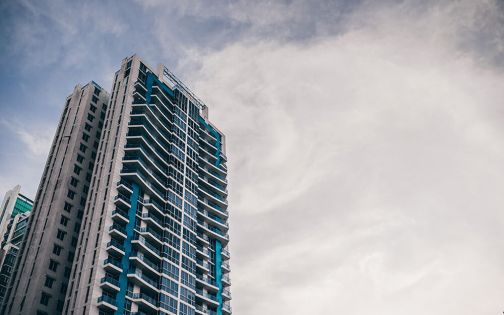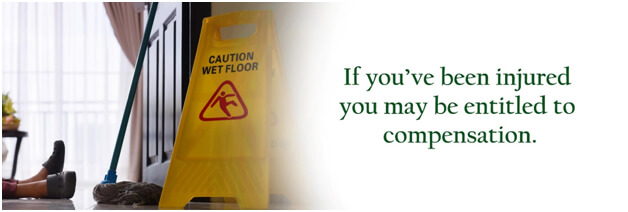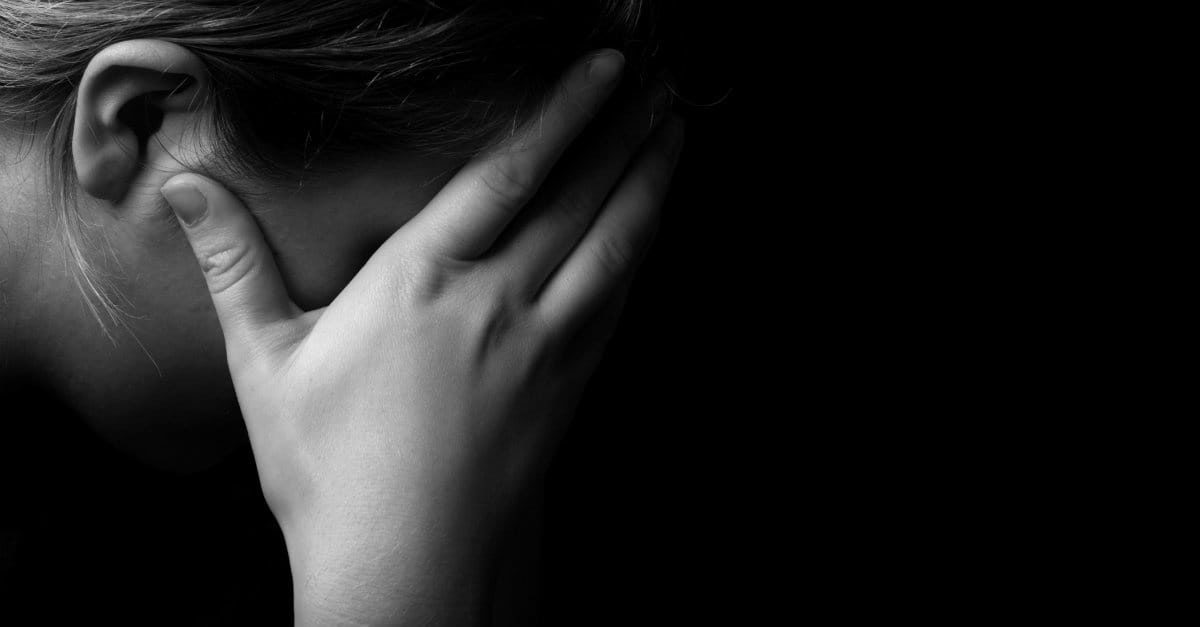Author: admin
When life throws you a curveball in the form of a personal injury due to someone else’s negligence,
When life throws you a curveball in the form of a personal injury due to someone else’s negligence, it’s not just your physical well-being at stake—your emotional health and financial stability could be in the balance. Seeking legal action can help you cope with the challenges and pursue appropriate compensation.
This article helps you navigate the critical factors when choosing the right personal injury lawyer. Whether you’re gauging their experience, assessing their reputation, or building a comfortable connection, this guide equips you with the knowledge necessary to make an informed decision that paves the way for a successful legal outcome.
A Roadmap to Legal Success: How to Opt for the Right Personal Injury Lawyer
The following criteria can help you make a well-informed decision that will enhance your likelihood of securing effective legal representation:
Qualifications and Expertise
Hiring a lawyer who specializes in personal injury law ensures that you have someone with in-depth knowledge of this specific area of law, including the latest developments and nuances that could impact your case.
Inquire about their past cases, particularly those similar to yours. A lawyer with a proven track record of success in similar cases is more likely to understand the intricacies of your situation and know how to maximize your chances of a favourable outcome.
Experience
Experience is a cornerstone of effective legal representation. Opt for lawyers with a substantial number of years practicing personal injury law. Their experience should extend to various personal injury cases, demonstrating adaptability and versatility.
Additionally, a lawyer well-versed in local and provincial legal systems can provide strategic advantages in understanding local regulations and court procedures.
Reputation and References
The digital age has made assessing a lawyer’s reputation more accessible. Online reviews and testimonials from past clients offer insights into their professionalism and effectiveness. Don’t hesitate to ask friends, family, or other lawyers for recommendations. Contact previous clients directly for candid feedback about their experiences to gain a more comprehensive understanding.
Communication Skills
Effective communication is critical throughout the legal process. Choose a lawyer who can explain intricate legal concepts in plain language, ensuring you understand your case’s progress. A lawyer who actively listens to your concerns and responds promptly reflects their commitment to your needs and priorities.
Resources and Support
A successful personal injury case often requires collaboration with medical professionals and investigators. Ensure your chosen lawyer has access to a network of specialists who can contribute to building a solid case. Moreover, a lawyer with ample staff and resources can dedicate the time and effort necessary to achieve the best possible outcome.
Client-centric Approach
Empathy and understanding from your lawyer are essential during challenging times. Select a lawyer who places your best interests at the forefront of their representation. Regular updates on case developments and involving you in decision-making processes exhibit their commitment to your well-being and success.
Local Knowledge and Accessibility
Local knowledge can significantly impact the outcome of your case. A lawyer familiar with local laws, regulations, and court procedures is better equipped to navigate the legal landscape effectively. Additionally, consider accessibility for in-person meetings and ensure the lawyer is available for discussions and updates as needed.
Case Assessment and Strategy
The initial consultation process is a valuable opportunity to assess a lawyer’s approach to your case. Look for lawyers who delve into the specifics of your situation and propose a tailored legal strategy. Their willingness to adapt, negotiate, or pursue trial based on the merits of your case showcases their commitment to securing your rights.
Ethical Standards and Professionalism
A lawyer’s ethical standards and professionalism are non-negotiable factors. Confirm their adherence to the Law Society’s Code of Conduct and inquire about their history of disciplinary actions or ethical violations. A lawyer with a clean record exemplifies their commitment to maintaining the highest standards of conduct.
Fees and Payment Structure
Understanding the fee structure is crucial to avoid surprises later on. Seek a lawyer who clearly explains their fees, whether they operate on a contingency basis or hourly rates.
Transparent disclosure of additional costs, such as court fees and expenses for obtaining medical records, ensures you’re well-informed. Secure a written agreement outlining the fee arrangement. This will help prevent misunderstandings down the line.
The Key Roles of a Lawyer in a Toronto’s Personal Injury Claim
If you experienced a personal injury due to someone else’s negligence, hiring a lawyer is strongly recommended due to the complexity and potential challenges involved. Here are the critical roles of a lawyer in a personal injury claim:
- Case assessment: Personal injury attorneys can assess the merits of your case, determining whether you have a viable claim. They consider factors such as liability, causation, and damages.
- Investigation and evidence gathering: A lawyer can initiate a thorough investigation into your accident, gathering evidence such as witness statements, accident reports, medical records, and expert opinions. This evidence is crucial for building a solid case and proving liability.
- Managing complex paperwork: Personal injury claims involve a significant amount of paperwork, including legal forms, medical records, accident reports, and correspondence with insurance companies. A lawyer can handle this paperwork efficiently, ensuring all relevant documents are properly filed and submitted.
- Navigating the legal landscape: Personal injury cases involve various legal procedures, such as filing court documents, meeting deadlines, and adhering to specific legal rules. A personal injury lawyer can ensure you meet all the requirements and avoid potential pitfalls.
- Maximizing compensation: An experienced personal injury lawyer understands the various damages you may be eligible for, including economic (quantifiable financial losses) and non-economic (intangible losses like pain, suffering, and emotional distress) damages. They can help you accurately calculate the value of your claim and fight for comprehensive compensation.
- Peace of mind: Dealing with a personal injury claim can be emotionally taxing, and having a lawyer who understands the process can alleviate much of the stress and burden, allowing you to focus on your recovery.
Seeking a Personal Injury Lawyer in Toronto? Trust in Our Expertise
When choosing the right personal injury lawyer in Canada, your decision matters. The dedicated personal injury lawyers from Affinity Law are here to provide the expertise and support you need during this challenging time.
Our focus on client-centric solutions and deep understanding of Toronto’s legal framework sets us apart. Call us at 1 844 786 5291 or contact us online and let us be your trusted advocate on the path to justice and compensation.
Pedestrian accidents with motor vehicles often leave victims with serious or life-threatening injuries if not fatal ones.
Pedestrian accidents with motor vehicles often leave victims with serious or life-threatening injuries if not fatal ones. As in accidents with bicyclists, a motorist is presumed negligent unless the driver presents convincing evidence to the contrary or that the pedestrian acted irresponsibly so that a third-party claim may be pursued.
Many accidents occur within crosswalks or when a person is otherwise crossing a street. Others occur while a person is walking alongside a roadway, or when a motorist is outside his car and attending to it for a tire or mechanical issue. Common factors that lead to pedestrian accidents include:
- Speeding
- Distracted driving
- Impaired driving
- Poor street lighting where a motorist failed to see the pedestrian
- Driving too close to a pedestrian
As a pedestrian, you do have a duty to look out for your own safety. This includes crossing within a marked crosswalk if available, not crossing against the light or in the middle of a street, staying off of freeways, and not running into a street unless it is safe to do so. However, motorists in suburban areas should be cognizant of small children on the streets and be on the lookout for them.
If injured, you are entitled to Accident Benefits regardless of fault for income replacement, medical and rehabilitation expenses, and loss of caregiver and housekeeping capacity. Their availability and amount depend on the severity of your injuries. Your own auto policy will provide these benefits or the policy of a household member. If no policy is unavailable, you can use the responsible driver’s policy for these benefits, or the Ontario Accident Claims Fund if there is no other insurance. Talk to a Toronto pedestrian accident lawyer about receiving benefits to which you are entitled.
You can simultaneously bring a claim against the responsible motorist in a third party claim so long as your injuries are a permanent serious impairment of an important physical, mental or psychological function, or a serious and permanent disfigurement. If so, you can pursue compensation for pain and suffering and loss of enjoyment of life along with income loss and medical expenses not covered by Accident Benefits.
Damages in a Fatal Accident
If a fatal accident, then your Toronto pedestrian accident lawyer can help you recover damages for the loss of your loved one. You can get Death and Funeral Benefits in these amounts:
- $25,000 to the spouse
- $10,000 to each dependent
- $6,000 in funeral costs
These amounts may be more if optimal coverage was purchased. In a third-party claim brought by close family members of the deceased, damages can include:
- Loss of the decedent’s love, guidance and companionship
- Loss of the decedent’s financial contribution
- Loss of any household services that the decedent would have performed
- Any loss of income that family members sustained as a result of the death
- Out-of-pocket expenses incurred during the decedent’s final days before succumbing
The decedent’s estate, apart from the claim brought by the surviving family members, can bring a claim for the pain and suffering endured by the decedent before dying.
To get all the damages for which you or family members are entitled, retain a skilled and knowledgeable Toronto pedestrian accident lawyer from Affinity Law.
Call us today for a consultation at 1 844 786 5291.
If you listen to the radio or watch daytime television, you likely have heard and seen ads about house
If you listen to the radio or watch daytime television, you likely have heard and seen ads about house or condo flipping as a quick and easy way of making thousands of dollars. One method was pre-construction flipping. You find a residence or condo unit that is under construction, buy it, and then before it is built or shortly after construction is complete, sell it for a profit. Although this has been profitable for some flippers throughout Ontario, the process is not as simple as it appears. Further, the practice has come to the attention of the CRA (Canada Revenue Agency) who are investigating flippers, finding that many have not paid income on the capital gains. Consequently, the CRA has imposed substantial penalties on those who unlawfully evaded the tax.
Pre-construction flipping is also known as assignment sales, since you are contracting with the builder over property that does not yet exist. Although the builder is not required to disclose this transaction, the CRA is not prevented from developing or using software to track assignment sales.
Under the Income Tax Act, the CRA can demand that you disclose to it all details of any transaction. Lately, CRA officials have looked into condo sales to investigate assignment sales to uncover abuses. Once alerted by the CRA, you will have to disclose the date you purchased the condo, what you paid for it, the date of sale, and the sale price. If you sold the condo within 12-months of its purchase, your transaction will be scrutinized to see if you claimed the personal residence exemption on the gains you made. If you are being scrutinized or are thinking of buying a condo as part of a short-term investment strategy, talk to an experienced Toronto real estate lawyer from Affinity Law.
Also, when you sell a pre-construction condo contract, you are considered the builder, which means you will owe the government capital gains tax and HST. This applies not only to the profit you make when selling the contract, but to the deposit that is returned to you.
HST Issues
HST issues arise under the following circumstances:
- The HST is generally included in the purchase price of the condo. It is charged at the lower rate since builders assume the buyer will reside in the unit and qualify for the rebate. If the unit is sold, the builder may be reluctant to provide the rebate to the third party and will pay it to the CRA. The third party then has to claim it. If the builder absorbed the rebate for the buyer’s benefit but who never lived in the residence, the CRA will go after the builder.
- Assignors of an assignment sale have to pay the HST on the higher assignment price being charged. Any profit is subject to income tax.
- If the assignor is a non-resident of Canada, the new buyer must withhold whatever HST the assignor owes on the transaction or the CRA will come after the assignee.
You can try to get the assignee to pay the HST although that will certainly deter buyers. Or, like some have done, simply not add it to the sales price or designate themselves as investors rather than traders to evade the tax. However, the tax has to be paid by someone. As an investor, you would pay 50% on your capital gains. As a trader, it is 100% since it considered business income.
Informal Auditing by CRA
If you have been involved in a pre-construction condo transaction, the CRA may send you a questionnaire to complete regarding the transaction, which is similar to an audit. If you have received such a questionnaire, immediately contact a Toronto real estate lawyer since you risk substantial penalties as high as 50% of the tax debt you were assessed if you are found to have been grossly negligent. If you have been assessed, then you likely owe penalties. However, you do have 90-days to file a Notice of Objection to the penalties.
What is the Residential Tax Exemption?
To claim the residential tax exemption, you have to report the disposition and designate the property as your principal residence on Schedule 3, Capital Gains (or Losses) on your tax forms. The exemption allows you any profit gained from the sale as tax-free. You do have to show intent to live there, or that a job or life-changing event forced you to sell soon after its purchase. Intent can be shown by:
- Mail with your name and address on it
- Utility usage
- You recorded the address with Service Ontario
- Photos of you in the furnished unit
If you had to sell within a short time after its purchase, you can show intent by:
- Proof of recent financial difficulties
- New job that requires relocation
- A relationship ended that forced the sale
Consult with a skilled Toronto real estate lawyer at Affinity Law if your intent is being questioned by the CRA.
How to Prove It’s an Investment
An assignment sale is fraught with risks for those contemplating pre-construction condo flipping. If you are an individual who has done similar transactions in the past, be aware that the CRA may look at these factors in determining if your property qualifies as an investment or trade:
- Was ownership for less than one-year?
- What expertise or experience do you have relevant to real estate or taxation?
- Your history of prior transactions
- Were improvements made close to the sale?
It is far better to invest in such property for the long-term so as to avoid harsh tax penalties and to enjoy any gains you do receive if not only to avoid CRA scrutiny. Here are some suggestions if you are thinking of buying a condo as an investment for the short term:
- Hold it for at least one-year, though 18-24 months from date of possession is more credible
- Lease it out for at least one-year to be eligible for an HST rebate of up to $24,000
- When you do sell, you can deduct operating expenses from your profit and be only taxed 50% on capital gains
In any event, a short-term investment in real estate may not result in the quick profit promised by those radio and television ads. A Toronto real estate lawyer from Affinity Law can provide you the advice you need so you can make an informed decision about this and any other real estate investment.
Call us today for a free consultation at 1 844 786 5291.

MURTAZA BAHADUR
- Assistant
- diala@affinitylawyers.ca
Bicyclists and pedestrians have the same right to the roadways as motorists and in many instances have additional protections.
Bicycle and Pedestrian Accidents
Bicyclists and pedestrians have the same right to the roadways as motorists and in many instances have additional protections. Motorists who unlawfully turn into bike lanes, who fail to give a bicyclist enough space, or who neglect to stop or notice pedestrians legally crossing the roadways are liable for the often catastrophic injuries and damages caused by their negligence. Retain a Mississauga personal injury lawyer from Affinity Law to represent your interests if you have a bicycle or pedestrian injury claim.

Bicycle Accidents
Bicycles are a wonderful and healthy mode of transportation. However, if you ride on city or suburban streets, you should be as conspicuous as possible to motorists and obey all traffic laws since you are obligated to do so. Wearing colorful clothing, having lights on your bike for night riding, staying within marked bike lanes and obeying the traffic laws can reduce your risk of being in an accident.
Also, be aware of the common causes of bicycle accidents by motorists:
- Dooring (motorist opens door in pathway of bicyclist)
- Driving in a bike lane
- Passing a cyclist too closely
- Failure to yield to bike at an intersection
- Distracted driver
- Impaired driver
- Turning in front of cyclist at light or stop sign
- Poorly designed bike lanes
Other factors that lead to accident are road and weather conditions and a defect in the bike that affects the tire or it braking.
Drivers should maintain at least 3-feet of space between them and bicyclists and not drive in bike lanes unless making a turn. Before entering a bike lane, the motorist should signal and ensure that no bicyclists are at risk. Motorists in parked vehicles also have a duty to safely open their car doors so as not to interfere with an approaching cyclist.
In some cases, a poorly maintained road surface or defectively designed bike lane could leave a municipality liable for a cyclist’s injuries. If the bicycle was negligently manufactured or serviced, the manufacturer or the bike shop that performed the service could also be found responsible. These cases are usually brought if the injuries are severe and permanent since insurers for these parties will vigorously defend their insureds, and negligence can be difficult to prove. Consult a Mississauga bicycle accident lawyer from Affinity Law if you were injured in a bicycle accident from the fault of another party.
Proof of Negligence
Typically, in a third party injury claim, the onus is on the plaintiff or injured party to prove that another party’s negligent conduct caused the accident. However, where a bicyclist or pedestrian is the one injured in an accident with a motor vehicle, there is a “reverse onus” pursuant to Section 193(1) of the Highway Traffic Act. This section presumes that the motorist was negligent so that the burden of proof is upon the motorists to demonstrate that they acted reasonably. If they present evidence of their reasonable conduct, then the claimant must present evidence that rebuts it. In many bike accident cases, liability or the degree of fault is challenged so that having an experienced Mississauga bicycle accident lawyer from Affinity Law is essential so that you can pursue a third-party claim against the responsible motorist.
Currently, only minors are required to wear bicycle helmets in Ontario. But you could be found comparatively negligent in an accident even if it was caused by a motorist if you suffered a head injury that evidence shows could have been prevented or minimized if you had worn a helmet. In such cases, your compensation would be decreased by your own degree of fault.
Accident Benefits
Accident Benefits are available to injured parties in motor vehicle accidents regardless of who was at fault. Injured bike riders can look to their own auto policies for benefits, or to that of a household member such as a parent who possesses a policy. If no policy is available, the injured rider can obtain benefits from the involved vehicle’s insured. If the motorist was uninsured, then the last resort for benefits is through the Motor Vehicle Accident Claims Fund.
A claimant needs to notify the insurer from whom benefits are sought within 7-days of the accident. You will receive an Application from the insurer for which you have 30-days to complete and submit. The form Includes a Disability Certificate to be completed by a health provider along with a Treatment Plan if you are unable to return to work or to normal or household activities for any period of time.
Your Accident Benefits include:
- Income replacement (up to the first 104 weeks if employed and you suffered a substantial inability to perform your work. You may receive more than 104 weeks if you are totally unable to perform work). The maximum payable is $400/week but you may receive more if you paid a higher premium.
- Non-earner benefit of $185 per week if you suffered a total inability to carry on a normal life. Payments begin after 26-weeks have passed. You can receive $329 per week if a student or you had completed education in the year before the accident but were not yet employed.
- Caregiver benefits if you were a caregiver at home and suffered a catastrophic injury, and you were not being paid.
- Medical and rehabilitation if not covered by OHIP or other health and disability plan. You can receive up to $50K over 10-years, but only $3500 if it is a minor injury. In a catastrophic case, you may obtain up to $1M over your lifetime.
- Housekeeping benefit in catastrophic injury cases or if you are substantially unable to perform household services that you actually had performed for up to $100 per week.
Third Party Claims
As an injured rider receiving Accident Benefits, you can also pursue compensation against the responsible party for pain and suffering as well as for lost income and future medical expenses that were not covered under your Accident Benefits. To have a valid third-party claim, your injury must meet a threshold standard, which is that your injury be a permanent serious impairment of an important physical, mental or psychological function, or a serious and permanent disfigurement.
A $30,000 deductible remains with the responsible motorist’s insurer if your award for pain and suffering is less than $100,000.
Your claim for additional compensation if you meet the threshold injury standard may include the following damages:
- Pain and suffering
- Diminished quality or enjoyment of life
- Past and future medical expenses
- Psychological impairment
- Past and future income loss
- Family Law Act claim by close family members
You have 120-days from the date of the accident to notify the other party of your intention to claim damages, and 2-years from the accident to file your claim in court.
Pedestrian Accidents
A pedestrian is any person on foot, a scooter, long board, wheelchair or bicyclist. When lawfully crossing the street, a pedestrian who is struck by a vehicle is presumed under the law to have had the right of way and fault is ascribed to the motorist pursuant to Section 193 of the Ontario Highway Traffic Act, referred to as the “reverse onus’. In other words, the motorist has the burden of proving that he/she was not negligent or responsible for causing the accident. In the typical injury case, the plaintiff or victim has the burden of proving the defendant’s negligence caused the accident. Once the pedestrian demonstrates that she was hit by the motorist, the driver has to prove that he acted lawfully and reasonably under the circumstances.
Any age group is vulnerable to motorists when crossing the street or being on the roadway attending a disabled vehicle or for any other reason, though seniors 65 and older seem particularly at risk probably due to moving more slowly across the street or in not being aware of approaching cars from poor eyesight or hearing. They may also be more likely to cross against the light.
Injuries in a pedestrian accident can be catastrophic, even if the impact was slight since you can be thrown to the pavement and suffer a traumatic head injury. Other injuries include:
- Broken limbs
- Fractured pelvis
- Internal organ injuries
- Spinal injuries, including paralysis
- Death
Factors in Pedestrian Accidents
The factors that lead to pedestrian accidents are numerous:
- Impairment
- Distraction—cell phone use by driver or pedestrian
- Poorly lit or illuminated intersections or roadways
- Motorist turning at intersection and not seeing pedestrian in crosswalk
- Speeding
- Failing to yield to pedestrian
- Passing car that had stopped to allow pedestrian to cross
- Failing to stop at signal light or stop sign
A motorist might argue that the pedestrian was at fault for causing his own injuries. If he can prove the pedestrian was crossing outside of a marked or unmarked crosswalk, was impaired, distracted, or created a dangerous condition such as running into the street, then a court might determine that there is no liability on the part of the motorist or impose a degree of comparative liability on the pedestrian. If the pedestrian was jaywalking, the court will want to determine if the person did not keep a proper lookout before crossing, or if the motorist should have seen the pedestrian in any event and avoided the accident.
If the pedestrian is found to be partly at fault, the damages awarded would be reduced by his degree of comparative fault. Ontario’s comparative negligence law can be characterized as a “pure” standard. In the US, many states have a modified comparative negligence standard where the plaintiff’s own negligence cannot be more than 49% or the claim will be dismissed. In Ontario, any degree of comparative negligence will not be fatal to an injury claim, even if it is 99%. It only reduces the damages awarded by the plaintiff’s percentage of fault.
Compensation in Pedestrian Injury Claims
A pedestrian injured by a motorist can collect Accident Benefits from their own auto liability police if they have one, or from the at-fault driver’s policy. All auto liability policies in Ontario are required to have these benefits.
You can collect non-pecuniary damages, or pain and suffering, if your injury was serious and permanent, a serious disfigurement or loss of a limb, or a permanent serious impairment of an important physical, mental or psychological function
A claim for Accident Benefits must be submitted within 30-days of the accident. Eligible recipients may recover the following benefits:
- Income replacement –Pays up to $400 weekly if your injuries prevented you from working. You can purchase optional benefits for increased payments up to $1,000 per week.
- Non-earners—Compensates you for up to 26-weeks if disabled from engaging in normal daily activities at $185 per week
- Caregiver—If you are the main caregiver for a dependent and unable to no longer care for them, you can be compensated for hiring someone else. This only covers certain injuries but you can purchase optional coverage that includes all injuries
- Medical and rehabilitation—Pays for reasonable and necessary expenses not covered by a government or supplementary health plan
- Attendant care—Expenses for hiring a caregiver for yourself due to the injuries caused by the accident
- Other—Covers possible lost educational costs, housekeeping and home maintenance expenses, and items damaged in the vehicle
- Death and funeral expenses–$25,000 is paid to your spouse, $10,000 to each dependent, and up to $6,000 for funeral costs. Optional coverage can increase these amounts to $50,000 for your spouse, $20,000 to each dependent, and up to $8,000 for funeral costs.
In serious cases, your insurer will often attempt to settle your Accident Benefits claim though a settlement cannot be offered until one year from the date of the accident. Once you settle, you can no longer claim these benefits. A settlement can also affect any other claim for additional compensation that you may bring against the motorist who struck you. Be sure to consult with a Mississauga pedestrian injury lawyer from Affinity Law if you have been offered a settlement.
Limits on Medical Payments
Medical payments are limited to $3,500 for care not covered by OHIP and if your injuries are deemed “minor” by the insurer. For injuries between “minor” and “catastrophic,” you may claim medical benefits up to $50,000. You are covered for up to $1M for catastrophic injuries such as loss of a limb, vision, paraplegia, or traumatic brain damage.
Pain and Suffering
Under Canadian law, you are limited in the amount of non-pecuniary damages you can receive, which includes pain and suffering or your diminished ability to enjoy life as you did pre-injury. The cap on these damages is raised annually per the rate of inflation and is currently at $380,912.00. Only the most egregious injuries are awarded the maximum amount.
There is no limit on pecuniary or economic damages that covers past and future loss of earnings, medical expenses and care.
The law also imposes a deductible on injury awards in car accident cases. As of 2019, there is a deductible of $38,818.97 on awards less than $129,395.49. The deductible does not apply for awards exceeding that amount. These amounts are adjusted yearly for inflation.
Hit and Run Accidents
Unfortunately, a high number of pedestrian accidents result in the motorist fleeing the scene without stopping to offer assistance, call for help, or to provide the required identification. Many drivers flee for a variety of reasons:
- Panic
- They are on probation for a prior criminal offense
- Intoxication or other impairment
- Driving a stolen vehicle
- Unlicensed or driving on a suspended license
- Uninsured
- Possess or transporting contraband
- Undocumented immigrant
- Unaware of accident
If the driver remains unidentified, the pedestrian can still claim Accident Benefits under the unidentified or uninsured provision of their own auto liability policy or one that covers them. If they do not have a policy, they can still collect benefits under the Motor Vehicle Accident Claims Fund (MVACF). They may still bring a tort claim against the MVACF as well. Third party claims brought under the unidentified or uninsured provision or against the MVACF are limited to $200,000.
Pedestrian accidents are not always clear-cut cases of liability. Also, there are often other issues such as collection of Accident Benefits and bringing a claim against the responsible motorist or an uninsured claim. To be sure you are compensated to the fullest extent possible, consult and retain a Mississauga pedestrian accident lawyer from Affinity Law.
Call us today for a free consultation at 1 844 786 5291
If you need help, schedule a free consultation by calling us at
1 844 786 5291
or email us at
info@affinitylawyers.ca
(We look forward to helping you gain the compensation you deserve.)
We serve the whole Greater Toronto Area including
Mississauga, Hamilton, Caledon and Ajax.
Also called premises liability claims, these are accidents that occur on someone else’s property, whether it is private or public.
Slip and fall accidents
Slip and fall accidents are a common type of injury claim. Although senior citizens may be particularly at risk because of balance issues and fragile physical conditions, anyone can be the victim of a slip and fall accident because of the negligence of a property owner. If you were injured in a slip and fall accident, do not hesitate to contact one of our Mississauga personal injury lawyers at Affinity Law.
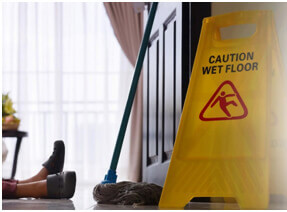
Injuries from slips and falls can be minor to extremely serious. These can include:
- Sprained ankle
- Torn knee ligaments
- Broken arm, pelvis, leg or ankle
- Facial fractures
- Fractured tailbone
- Kneecap fracture
- Concussion or traumatic brain injury
All property owners, commercial and private, also referred to as “occupiers, “have a legal duty to keep their premises reasonably safe from hazards that could injury anyone lawfully on their property”. The severity of the injury may depend on the condition of the surface where the victim fell as well as the physical condition of the claimant. However, it is irrelevant if the person who fell was in poor physical condition and prone to serious injury from even a slight fall that would not have likely resulted in a serious injury to a person in normal or good physical health.
Slip and falls can occur on any type of property, including:
- Roadways
- Retail stores
- Grocery stores
- Sidewalks
- Parks
- Public or private restrooms
- Private residences
- Schools
- Bars or nightclubs
- Parking lots or garages
- Malls
- Offices
- Apartments
By promptly retaining one of our highly experienced Mississauga injury lawyers after a fall, you have a greater opportunity for obtaining the most compensation available for your claim.
Causes of Slip and Falls
There are numerous factors that can lead to a serious slip and fall accident:
- Slick or icy surface
- Torn carpeting
- Uneven surfaces or steps
- Wet entrance mat
- Broken step
- Protruding objects
- Lack of handrail or a defective one
- Object or debris on the floor
- Poor lighting on a stairway or other commonly used passageway
Many slip and fall accidents occur in the winter months when sidewalks, driveways, parking lots, and residence and store entrances are slippery from ice and snow. In grocery stores, liquid from a broken bottle, a dropped piece of fruit, or freshly mopped or waxed floor can present hazards that store owners must warn patrons about or take steps to remove. In a residence or office building, there may be faulty steps, torn carpeting, or a defective handrail that can lead to severe injuries.
What is Reasonable Care?
Ontario law requires that property owners take reasonable measures to ensure that those persons lawfully on their property are free from harm due to slick surfaces, broken steps, uneven surfaces, or any other condition that could reasonably cause harm to someone. If a person does suffer an injury from a slip and fall, the court will look at what measures or practices the landowner undertook to fulfill his or her duty of reasonable care. For example:
- Did the property owner maintain a routine procedure for inspecting the property?
- Was there a schedule for inspecting and cleaning the property?
- If a hazard was found, what steps were taken to warn persons of the risk?
- How long had the hazard been present before the accident occurred?
- Had the owner been previously alerted to the hazard?
- Did the owner clearly post a warning to others about the hazard?
Obviously, a commercial business owner who invites and encourages people to come onto the property will be scrutinized to see what safety measures were taken to ensure the property was free of hazards. For instance, were the food aisles in a grocery store inspected on a routine or standard basis such as every two hours? If a floor surface was uneven or slick, were there signs warning patrons of the risk? Is there a record of the inspections? Landlords of rented apartments also have a duty of care toward their tenants to keep common areas safe and to warn of hazard within leased units or in the common areas.
In case of a trespasser, the landowner’s duty of care is only to “…not create danger with the deliberate intent of doing harm or damage to the person or his or her property and to not act with reckless disregard of the presence of the person or his or her property.” Occupier’s Liability Act. In other words, the landowner may not set a trap or set out to purposely create a dangerous condition that physically injures the trespasser or person committing a criminal act on the property.
However, a person who trespasses willingly accepts the risk of injury from hazardous conditions as does a person who signs a waiver of liability. Signed waivers are routinely seen in situations where people undertake certain recreational activities for a fee. But if you are engaging in a recreational activity for which no fee was charged, such as walking or playing in a park, wilderness area, or forest trail, then you have also willingly assumed the risk of harm. However, the risk of harm is not assumed where there is an unexpected hazard that the landowner knew or should have known about and failed to remedy. An example is that of child who is injured from a swing in a public park that broke because the metal chains holding it were worn out.
Other circumstances where a landowner or occupier could be held liable include:
- Not cleaning a spill within a reasonable time
- Not posting clear warnings about hazards such as uneven steps, holes, broken stairs, or other hazards
- Failing to remove ice from a driveway or walkway that the occupier knew of or should have known about
- Neglecting to inspect the property before visitors arrive to a residence
- Inadequately maintaining stairways or walkways (rotten railing or structure)
- Providing alcohol to visitors that results in a foreseeable injury (intoxicated person wanders off an unprotected balcony during the evening)
For municipalities, their degree of responsibility is found in the Ontario Municipal Act (2001). In cases of municipal liability for slip and falls on a sidewalk, the municipality must have been “grossly negligent,” which is a higher burden of proof for the claimant to show. Also, If you are injured on city or provincial property, you have only 10-days to give notice of your injury unless circumstances prevented you from giving timely notice. For all other slip and fall claims, you have 2-years from the date of the injury to file your claim in court.
Your Mississauga slip and fall lawyer from Affinity Law can demonstrate liability on the part of the occupier by reviewing inspection reports, if any, and having experts examine the floor, sidewalk, step, handrail, balcony, or other defect or condition that caused the accident. In some cases, witnesses can attest to how long the defect or hazard had been present.
Responsibility of the Claimant
Anyone who was injured in a slip and fall accident in Ontario also has a duty to look out for his or her own safety. You can be held fully or partially responsible for your own injuries if you were less than responsible for your own safety. These situations might include:
- Being intoxicated or under the influence of drugs unless alcohol was supplied by the landowner and the injury reasonably foreseen to the owner
- Wearing inappropriate footwear for the type of surface where the fall occurred
- Failing to notice an open and obvious hazard
- Running on a known icy or slick surface
- Ignoring a prior warning of a hazard
If you are determined to be partially responsible, your damages will be decreased by your percentage or degree of fault. Because most insurers in slip and fall cases will attempt to lay some or all of the blame for the accident and injuries on the claimant, you will need a knowledgeable Mississauga slip and fall lawyer to prosecute your claim.
Damages in a Slip and Fall Accident
Damages in a slip and fall accident can be substantial. Typically, they may consist of the following:
- Past and future loss of income
- Past and future medical expenses
- Rehabilitation costs
- Housekeeping and home maintenance expenses
- Loss of enjoyment of life
- Pain and suffering
- Family members claim for loss of the injured person’s care, companionship, and guidance and other financial losses
Your Mississauga slip and fall lawyer from Affinity Law can obtain all documentary and testimonial evidence to support damages, including your medical records and billing and paystubs or employment records. A medical report from your treating physician or health care provider can detail the history of your injury, symptoms, your physical condition before the fall, the severity of the injury, rehabilitation period, complaints of pain, and your inability to perform work, routine daily activities, or recreational activities. Because demonstrating proof of your damages can be as complex proving liability, it is vital that you consult with one of our experienced Mississauga injury lawyers from Affinity Law as soon as possible to avoid submission/notice related delays in filing your claim.
Call us today for a free consultation at 1 844 786 5291 .
If you need help, schedule a free consultation by calling us at
1 844 786 5291
or email us at
info@affinitylawyers.ca
(We look forward to helping you gain the compensation you deserve.)
We serve the whole Greater Toronto Area including
Mississauga, Hamilton, Caledon and Ajax.
Psychological and PTSD Claims
Many people experience some level of depression, stress or anxiety at various times in their lives.But if your stress, anxiety or depression was caused by an accident or injury, can you recover compensation for your psychological condition if it impairs your ability to perform your job or to engage in normal, routine activities? Is it necessary that a physical injury be the cause or trigger for a legal claim of psychological injury or post-traumatic stress disorder? These are all questions, issues, and considerations that an experienced psychological damages lawyer from Affinity Law can address for you.
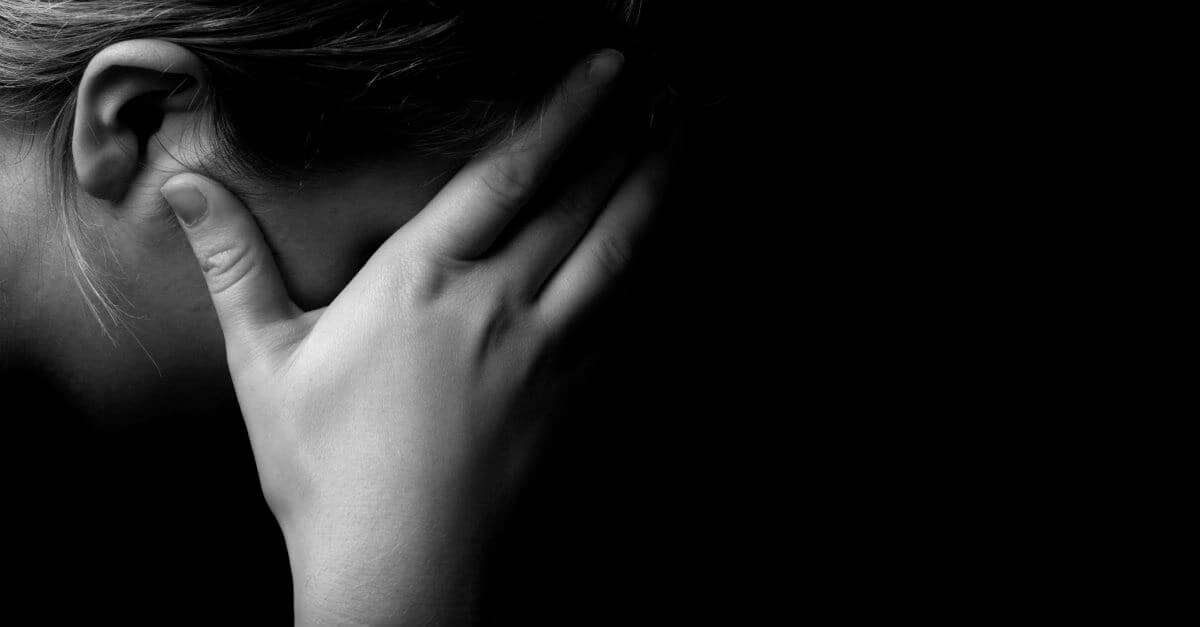
Claims for Mental Distress or Anguish
In many personal injury lawsuits where an injured person is bringing a claim based on the negligent conduct of another person or entity, the claimant will allege damages for medical expenses, lost income, diminished quality of life, pain and suffering, and psychological or mental distress. Mental distress claims can include a wide array of symptoms:
- Anxiety and stress
- Depression
- Phobias
- Changes in mood and personality
- Post-traumatic stress disorders (PTSD)
- Sleeping problems or disturbances
- Weight fluctuations or inconsistent eating patterns
- Nausea
- Diarrhea
- Chronic fatigue
- Lack of sexual desire
- Mood swings, irritability and aggression
- Lack of interest in social activities
- Chronic pain
It is necessary that a medical professional relate these symptoms to mental distress so as to prove a causal connection to the accident or incident as being the direct cause of your distress.
Types of Lawsuits Involving Mental Distress
Any personal injury lawsuit can include a claim for mental anguish, anxiety, or distress such as:
- Car accidents
- Pedestrian accidents
- Medical malpractice
- Product liability
- Premises liability
- Wrongful death
- False arrest
- Intentional torts—sexual assault, sexual abuse, unlawful imprisonment
- Sexual harassment
Although not essential to sustaining a viable claim for psychological harm, the more severe the incident or accident, the more credible your claim. Your psychological damages lawyer from Affinity Law can help with proving the seriousness of your injury so that you can collect the benefits to which you are entitled.
Is Physical Injury a Prerequisite?
Physical injuries are not a prerequisite for alleging psychological damages though most cases do involve a physical injury that leads to emotional distress or other psychological harm. You can bring a claim for psychological distress harm against a negligent party if it meets a two-part test:
- The emotional or psychological injury was a foreseeable consequence of the defendant’s wrongful or negligent conduct; and,
- The psychological injury you are suffering fromis serious enough to be a recognizable psychological condition or illness
A recognizable psychological injury or condition is typically one found in the Diagnostic Statistical Manual (DSM)-VI used by psychologists and psychiatrists when diagnosing patients. If your symptoms fit the criteria of a condition such as post-traumatic stress disorder that is severe or critical enough, you can be awarded certain benefits and your claim can go forward toward collecting additional compensation in a third-party claim. The threshold or standard to pursue a third-party claim for a physical or psychological injury is “a serious and permanent impairment of an important physical, psychological or mental function,” or one that has severely affected your ability to engage in your daily living activities.
Some unusual cases of psychological distress claims that Canadian courts have allowed to continue include:
- Prison inmates sued the federal government for “uncomfortable detention” wherein they allegedly were denied lack of access to sunlight, a barber, sufficient library resources, and adequate sleep resulting in extreme depression, erosion of self-worth, feelings of hopelessness, and nervous shock.
- A Calgary resident who sued a grocery co-op after she was banned for shoplifting alleged defamation, shame, loss of family honor, and which led to her husband’s suicide.
- An Ontario motorist who was allegedly speeding, texting and under the influence of alcohol sued 3 bicyclists whom she ran over and caused serious injuries to one and fatal injuries to another alleged her own psychological suffering including PTSD, extreme depression, and catastrophic impairment and anxiety. She did claim the cyclists did not have lights on their bikes, were not wearing helmets, and were not riding in a “prudent manner.”
Although these claims may seem extreme, there are often issues that news reports do not include that would justify or support reasonable and highly plausible allegations of mental distress. In the majority of accident cases where psychological harm is alleged, there are serious and credible factors that cause injured victims severe distress that diminishes their enjoyment of life and ability to function normally.
How to Prove Emotional Distress
While Canadian courts allow a claim for emotional distress without an accompanying allegation of a physical injury, your opportunity for receiving substantial compensation is heightened if there is a physical injury element. Usually, the more serious or traumatizing the injury, the better chance the claimant has to prove that he/she did suffer emotional distress. For example, a person who suffered a permanent disfiguring scar on her face, or who is permanently impaired and in chronic pain and may never work in his chosen career or pursue a favorite activity has a much more provable claim of depression, anxiety, and distress than someone who alleges a strained back or repairable torn cartilage in his knee has caused him or her extreme anxiety.
While Canadian courts allow a claim for emotional distress without an accompanying allegation of a physical injury, your opportunity for receiving substantial compensation is heightened if there is a physical injury element. Usually, the more serious or traumatizing the injury, the better chance the claimant has to prove that he/she did suffer emotional distress. For example, a person who suffered a permanent disfiguring scar on her face, or who is permanently impaired and in chronic pain and may never work in his chosen career or pursue a favorite activity has a much more provable claim of depression, anxiety, and distress than someone who alleges a strained back or repairable torn cartilage in his knee has caused him or her extreme anxiety.
Other factors that can demonstrate severe distress include:
- Duration of the condition—the longer you suffer on-going and chronic pain, the more credible is your claim that you are suffering severe emotional distress
- Related bodily harm or condition—your distress is accompanied by physical signs of distress
- An extreme underlying cause—you were a victim of a bombing, robbery where you were shot or stabbed, kidnapped, raped, or survived a car accident where one or more persons in your vehicle died or suffered gruesome injuries
- Loss of employment—you lost your job as a result of your physical injuries
- Medical records confirming nature and extent of your injuries
- Psychiatric or psychologist’s records confirming visits, medications, and therapies
- Physician’s report confirming your symptoms
If you demonstrate certain physical signs, this can be essential in proving that your psychological distress is real and sustainable. These are difficult claims to pursue that will require the skills of an experienced psychological damages lawyer from Affinity Law or an insurer will likely deny your claim.
Family Law Act
Immediate family membersthat includes spouses, children, siblings, parents, and grandparents can also pursue a separate claim for pain and suffering or emotional harm if a loved one suffered serious and permanent injuries or was killed in an accident. These damages are for the loss of the loved one’s guidance, comfort, care, or companionship.
Post-Traumatic Stress Disorder (PTSD)
A consequence of a particularly distressing or traumatic accident or incident such as a serious car accident,combat, a horrific natural disaster, sexual assault,pervasive sexual abuse or harassment is the onset of PTSD. This is a recognized psychological disorder characterized by feelings of anxiety, panic or fear from a triggering factor that can cause them to re-experience the trauma even if they are not in imminent danger of physical harm. PTSD can present as intense or serious an impairment as any physical injury.
Assault victims can sue their assailants for emotional distress or PTSD if they exhibit the recognized symptoms in civil court, even if the defendants are not prosecuted in criminal courts. The civil standard for holding a defendant liable for civil damages is less than that for criminal defendants and is not dependent on the defendant being found criminally responsible. Along with seeking damages for emotional distress, a victim can also pursue damages for lost income, medical expenses, and any other financial losses attributed to the defendant’s negligence or criminal conduct.
Mental health professionals have classified PTSD and its symptoms into 3 distinct categories:
- Re-experiencing symptoms and suffer flashbacks and nightmares
- Intentionally avoiding symptoms—staying away from triggering events that can revive the traumatic incident, experiencing memory loss, emotional numbness, avoiding social contacts
- Hyper-sensitivity—overly sensitive, quick to anger, being constantly on edge, trouble sleeping
Car accident victims may suffer injuries that extend beyond the physical ones. It is not uncommon for an injured claimant to experience panic, anxiety, an extreme reluctance to drive a car or even be a passenger. This can cause substantially interfere with a person’s enjoyment of life or ability to engage in routine, daily activities. However, insurers typically are skeptical of PTSD claims and will require significant proof and medical or psychiatric documentation that you are indeed suffering form this condition and that it is severe enough to interfere with your ability to perform your job or to engage in routine, daily activities. For this reason, retaining a PTSD lawyer from Affinity Law soon after your accident can prevent any rejection or delay in receiving benefits.
Car accidents are the most prevalent incident that leads to PTSD in those claiming emotional harm in lawsuits or claims since they are the most common personal injury claims. This is unsurprising given the millions of cars on our highways and roads every day. Some estimates are that 10% of car injury victims experience PTSD to some degree. Risk factors that can precipitate PTSD from a car accident include:
- Severe or traumatic car accidents
- A serious physical injury
- Other vehicle occupants were severely injured or killed
- You felt that your life was threatened
- You may have had a prior traumatic experience
- There is a history of mental illness
- You mentally re-experienced the trauma shortly after the accident
- There is a history of drug and substance abuse that has unduly influenced your mood and behavior
There is a family history of PTSD
Limits on Damages for Pain and Suffering or Emotional Distress
Damages for pain and suffering, which includes psychological or emotional distress, in Canadian courts are limited. Before your claim is even eligible for a non-pecuniary (non-economic) award, you must prove that your psychological injury in this case has resulted in “a serious and permanent impairment of an important physical, psychological or mental function.”
If your claim meets this threshold test, then your non-pecuniary damages award is statutorily limited to a current cap of $380,912, a figure that fluctuates annually depending on the rate of inflation. However, your award in an Ontario court is subject to a deductible of $38,818 unless your award for pain and suffering is at least $129,395.49 as it currently sits. For example, if you are awarded $100,000 for emotional distress, it will be reduced to $61,182.00. If your award was $40,000, you would receive only $1,182.00. Any award that does not exceed the deductible will result in your not receiving any non-pecuniary damages. There is no cap or limits on economic losses, which includes lost income and medical expenses.
For family members who are able to claim non-pecuniary damages for their loved one’s catastrophic injuries, their damages are subject to a current deductible of $19,409.49, unless their loved one died in which case the deductible does not apply to reduce the award. Their claims, however, must exceed a floor of $64,697.21 before the deductible can be waived. These deductibles increase by a rate of 1.6% annually.
Retain a Psychiatric or Psychological Damages Lawyer
Obtaining benefits for emotional distress or for suffering from PTSD as a result of the negligent or wrongful conduct of another person can be difficult. There are significant barriers to overcome, complicated applications to complete for benefits, deadlines to meet, and medical and other documents to obtain. Having an experienced and dedicated personal injury lawyer from Affinity Law to handle your case from the outset can significantly increase your opportunity to receive benefits and reasonable compensation for your damages.
Call us today for a free consultation at 1 844 786 5291.
Car, truck, RVs, or motorcycle accidents are the most common injury claims since there are millions of motor vehicles that travel on our roadways each day.
Mississauga Car Accident and Injury Lawyers
Car, truck, RVs, or motorcycle accidents are the most common injury claims since there are millions of motor vehicles that travel on our roadways each day. Every driver has a duty to exercise ordinary care while driving, which means obeying the traffic laws and keeping a lookout for road hazards. But even car accidents where liability appears evident can have issues that can prevent you from realizing the full value of your claim. Having a Mississauga car accident lawyer from Affinity Law on your side gives you the best opportunity for a satisfactory resolution of your motor vehicle accident claim.

Car Accidents
It is relatively easy to get a driver’s license and to obey the traffic laws, such as stopping at stop signs and red traffic signals, not speeding, not drinking and driving, not using a smartphone, and generally being focused and attentive to driving. Unfortunately, many drivers ignore commonsense, drive well over the posted speed limit or what is safe for conditions, and violate basic traffic laws. The most common causes of car accidents are:
- Speeding
- Following too closely in traffic
- Unsafe lane changes
- Impaired driving—alcohol and drugs
- Distracted driving
- Fatigue
- Weather
- Defective road design
- Poor road maintenance
- Defective tire, steering, braking or other mechanical failure
Despite decades of public campaigns and stricter laws, penalties and enforcement measures, drunk and drugged driving remain a major cause of serious and fatal car accidents. Distracted driving, which usually means use of a smartphone while driving, has become as serious a menace as impaired driving.
In some cases, the condition or design of the road where the accident occurred may have been a contributing factor in the accident. For example, a curve did not meet industry standards regarding its design; a sign was missing that could have warned of a hazard or it was obscured by overgrown vegetation. In other cases, a defective roadway barrier may have failed to keep a car from leaving the roadway or traveling into the opposite lane of traffic.
No-Fault or Accident Benefits
Ontario has a no-fault insurance or Accident Benefits system whereby you can claim certain compensation from your own auto insurer in an accident regardless of who was at fault. Benefits include medical treatment, costs of rehabilitation, replacement of lost wages, caregiver benefits, and others.
In non-catastrophic cases or where your injuries are not life-altering, you can receive up to $100,000 in benefits over 10-years in med/rehab benefits. For catastrophic cases, you can receive up to $1,000,000 over the course of your lifetime. Income replacement means you may receive 80% of your net pre-accident income as averaged from the 26 of the 52-weeks that preceded the accident. You may not receive more than $400 weekly, though you can receive more if you paid a higher premium on your insurance.
To recover additional compensation from the at-fault driver such as for pain and suffering or for emotional distress, you must demonstrate that your injuries were “serious and permanent.” This includes disfigurement or impairment of an important physical, mental, or psychological function.
Damages in a Mississauga car accident claim may include:
- Past and future medical expenses
- Past and future income loss
- Diminished enjoyment of life
- Disfigurement
- Pain and suffering
- Family members’ claims under the Family Law Act
Pain and suffering, or non-pecuniary damages, are cappedwith yearly increases. The cap is currently at $340,000 in Ontario.
Motorcycle Accidents
Motorcycles are fun to ride, are economical, and take up little space on city streets or garages. However, riders are vulnerable to any minor mishap that can cause them to lose control or be propelled from the bike, easily causing fatal or catastrophic injuries such as paralysis, traumatic brain injury, severely broken limbs, permanent disfigurement, and other life-altering injuries.
About 80% of all motorcycle accidents result in injuries as compared to just 20% for passenger vehicles, according to the National Highway Traffic Safety Administration. Riding a motorcycle also increases your risk of being in a fatal accident by at least 15 times over that of driving or being a passenger in other motor vehicles.
You may take all necessary precautions including wearing protective clothing and a helmet and driving defensively, but still be at the mercy of reckless and inattentive motorists.
The most common factors leading to motorcycle accidents include:
- Left turns at intersections
- Unsafe lane changes by drivers
- Motorists’ failure to see motorcyclist when entering a roadway from side road or driveway
- Poor weather
- Slick road surface
- Uneven pavement
- Roadway defects or objects on the road
- Rider inexperience
- Failure to maintain a proper distance
- Rear-end accidents at stop lights and stop signs
- Motorcycle design and manufacturing defects (fuel system leaks)
- Poor service or maintenance of the bike
- Alcohol or drug impairment by rider or motorist
Motorcycle riders are generally perceived as reckless individuals and their version of the facts are often dismissed as not credible if challenged by that of an involved driver of a passenger vehicle. It is not uncommon for an experienced Mississauga motor vehicle accident lawyer to use experts in accident reconstruction or human factors in order to prove liability.
Truck Accidents
Trucks, or large commercial vehicles such as tractor-trailers, 18-wheelers, or semis, can easily cause catastrophic or fatal injuries to occupants of smaller vehicles. These road behemoths can easily weigh 80,000 pounds or more, depending on its load, as compared to a typical passenger vehicle that weights 4,000 pounds. Although there are far fewer of these vehicles on our roadways, 1 in 5 fatal crashes on Ontario highways involves a large commercial truck, according to the Ontario Provincial Police.
There are numerous causes of a truck accident:
- Fatigue
- Impaired driving from drugs or alcohol
- Distracted driving such as texting while driving
- Speed
- Unsafe loading
- Faulty tires
- Unsecured loads
- Defective hitches
Trucking companies and drivers are heavily regulated. For example, drivers are limited in the number of hours they can drive in a day and over a period of time, must pass physical examinations, and be subject to drug testing. Truckers must maintain logs that contain data on the loads they carry, the number of hours they are driving, rest periods, fuel, and inspections among other things. Most trucks have so-called black boxes on-board monitors that contains this data and other mechanical and operating information that can contain clues to how or why an accident occurred.
Finding and holding the responsible party to account is not always so simple. For example, the truck and its trailer may be owned by different parties. Some other party might have improperly secured the load. If there was a steering or brake issue, still another party might have negligently overlooked or serviced the problem or produced a defective part. Compounding the liability issue is that each party may have different insurers who will seek to impose fault on anyone other than their own insured.
Having a diligent, resourceful and knowledgeable Mississauga accident lawyer from Affinity Law is essential if you want your injury claim diligently and professionally handled so that you can obtain the most compensation available for your injury.
Call us today for a free consultation at 1 844 786 5291


